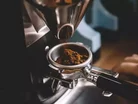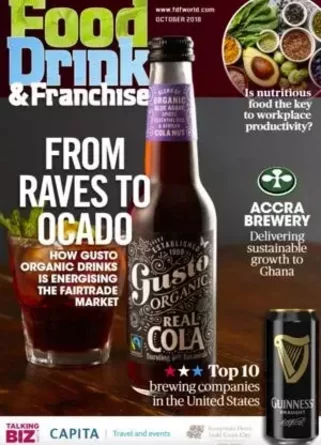Debunking the myths of speciality coffee labels

What’s in a name? Of the estimated 180 speciality coffee roasters in the UK, just over 60% have only two years or less of history under their belts. Growth in the coffee industry is great, but when labels are strewn with tropical sounding locations, mysterious descriptors and the strangest flavour notes, it can lead to consumers feeling alienated and confused.
The Allegra World Coffee Portal report of 2015 found that Britain is bringing more specialty coffee to the mass market than ever before. They predict that “consumers will drink more specialty coffee at home” than ever before and the statistics support this. However, if there is a growing demand for specialty coffee, it leads me to wonder why consumers are being left in the dark overwhat these labels mean.
In this article, I’ve narrowed down the most important things to understand when buying specialty coffee, and why these details matter when deciding what to drink.
Country of Origin and Blends
A lot like wine, the origin country of coffee can tell you a lot about its flavour. Single origin coffees tend to be of higher quality with distinct flavours whilst blends (typically a combination of origins) are combined to balance out multiple coffees that may have relatively simple tastes. Because single origins have unique flavours and aromas, adding another coffee might obscure the taste - whereas blending a fruity coffee with a coffee with a lot of body will create a harmonious taste.
Whilst you might think that categorising coffees by their origin is simply a marketing technique, in truth, each coffee is the result of which country it was grown in and exactly how it was grown. For instance, Ethiopian coffee is renowned for its summer-y and floral aroma whilst Colombian coffee is acclaimed for its rich and chocolatey tastes.
However, the country of origin does not necessarily mean the coffee will conform to the taste profile associated with the country, so ensure you read on for other terms that will give you a more accurate indicator of taste.
Roast Level
Approach this word on your coffee labelling with caution. Whilst specialty coffees are roasted meticulously from light to medium, the roast level of specialty coffee is often misconstrued as the strength of the coffee - one being lightly roasted and five being a dark roast. It’s understandable considering the bitterness that comes with a dark roast coffee can often be associated with its potency. This is where a lot of coffee drinkers get confused as they will usually reach for a bag labelled with a ‘5’ and wonder why they haven’t had a caffeine kick. In reality, dark roasted coffee will contain less caffeine as a significant amount of it will have been burnt off in the roasting process.
SEE ALSO:
- Starbucks inks partnership with Alibaba to drive coffee delivery in China
- Nestlé expands new coffee capsule production line in Vietnam
- Chinese startup Luckin Coffee becomes unicorn after raising $200mn to drive expansion
Therefore, I would recommend using roast level as a rough guide to the bitterness of your speciality coffee and opting for a coffee with a lower roast level if you’re looking for a buzz.
Processing Method
This refers to the way in which the coffee beans were removed from the fruit on the farm. We might know them as coffee beans but they are in fact the seeds of fruit trees. The methods used in this process creates different flavour elements, which is why they tend to appear on specialty coffee labels. Whilst producers are continuously inventing new ways to process coffee, there are just 3 principal methods:
- Washed: When the coffee beans are removed of its fruit, physically by machinery or loosened through natural fermentation, with copious amounts of water making for a brighter and cleaner flavour.
- Honey: Sometimes referred to as “pulped natural” or “semi-washed”. This is where the outer skin of the fruit is removed, leaving the inner layer of fruit flesh (mucilage) to dry with the bean, creating a less acidic taste.
- Natural: Where whole coffee cherries are dehydrated in the sun completely before removing the bean. There are two main methods of natural processing. The first being where the cherries are left to dry on the tree before being pulled off, usually resulting in a chocolatey and nutty taste. The second method being where cherries are picked ripe and then laid in the sun to dry, which tends to produce a sweet and fruity taste.
Certificates
When trying to make conscious environmentally-friendly choices, it can be overwhelming when almost every specialty coffee label has certificates claiming their sustainability. You might even come across certifications on labels alluding to a coffee’s superior quality and wonder if it is simply a vanity award that a company has given themselves. These are the most popular certifications that you’ll come across specialty coffee labels and what they mean:
-
Rainforest Alliance and UTZ: These are two certificates that merged at the end of 2017. It is not exclusively an environmental certification but also ensures coffee producers support ecological issues like community relations and fair treatment of workers. However, read the label very carefully as Rainforest Alliance allows brands to use their seal on coffee that only contains 30% certified beans, meaning that your blend could only be partially sustainable.
-
Fair Trade: As the most popular sustainable certification, it means that coffee farmers and producers were paid above the amount of the international coffee price. This, however, doesn’t necessarily correspond to a living wage.
-
Direct Trade: Whilst many coffee producers use this model to communicate their actions towards sustainability, this is actually a trade model rather than a certification. This is where coffee roasters buy straight from the growers whilst cutting out traditional middleman buyers and certifications such as the above. Supporters of this model say it is mutually beneficial for farmers and roasters as it helps build relationships between the two parties, however, the lack of a third-party certificate leaves coffee drinkers to make their own assumptions of the trustworthiness of the company.
Though there are inconsistencies around specialty coffee labels, understanding what they mean, or at least try and convey, allows consumers to make more informed choice. Even if you don’t work in the coffee industry and only read the labels when you go shopping, knowing what it means will improve the outcome of which coffee you choose over time. As the demand for specialty coffee rises, clearer explanations on labels as to why that information is on the label will go a long way in making speciality coffee more accessible to a wider audience. Not only is this a great thing, but it is also a wake-up call for coffee producers to be more transparent about their processes.
Article written by Adam Hartshorne of Coffee Central
Featured Articles
Fresh investment supports TRACT in enhancing tools for sustainability in the food and agricultural sectors, aligning with EU regulations
The devastating floods in Spain have shaken up the global citrus supply, heightening challenges in the fruit juice drinks market
McDonald's has spent 40 years supporting students with scholarships & plans to continue, despite Robert F. Kennedy Jr.’s plan to Make America Healthy Again



